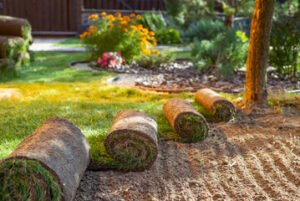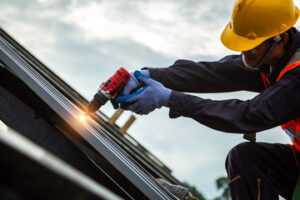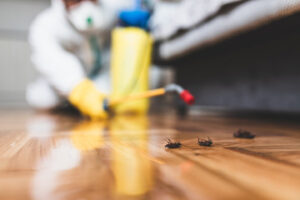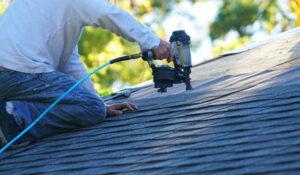Lush and beautiful lawns are a dream for many homeowners and business owners. The best choice to achieve this goal depends on the homeowner’s preference and maintenance requirements.
Maintaining a lush organic lawn requires constant attention to mowing, weeding, fertilizing, and pest control. This also includes frequent watering that may be restricted during the summer due to water conservation concerns. Sod And Turf Harrisburg PA can keep your lush and beautiful lawns.

Cost
While artificial turf costs more upfront than sod, it will pay for itself in about two and a half years. It will also save you on ongoing maintenance costs like water and chemicals, as well as the cost of lawnmowers. The decision between sod and turf also comes down to personal preference and lifestyle. If you love to spend time gardening, a sod lawn will likely be more appealing as you can enjoy the smell and feel of living grass. However, if you don’t have the time for lawn maintenance and want a picture-perfect green yard year-round, then sod or turf may be the best choice for you.
Sod offers an instant solution for bare soil and is available in squares or rolls that can be installed right away. While sod has low initial costs, it can require extensive watering (especially in the first few weeks) and regular mowing and fertilizing to keep it lush. This can become expensive over time.
A sod lawn can be more difficult to maintain because it is more susceptible to weeds, pests, and disease than an existing grass landscape. It is also less tolerant of hotter temperatures, and it is vulnerable to colder weather. Many of these problems can be avoided with a thorough lawn care program, but it requires consistent effort to keep your landscape looking its best.
The type of sod you choose will have a big impact on your long-term costs. Some sod varieties, such as Discovery Bermuda grass, are a good option for Florida because of their dark color and drought resistance. However, many prized cultivars can only be reproduced vegetatively through sprigging, which means that they must be replanted at sod farms to produce additional plants. This process is labor-intensive and expensive and can contribute to environmental concerns over the presence of heavy metals in our oceans and landfills.
If you’re interested in learning more about sod or turf, it’s important to seek the advice of a professional sod supplier and installer who understands our local climate and soil conditions. Contact us today to see what the right choice is for your home or commercial property!
Appearance
The choice of whether to seed a new lawn or lay sod will depend on your aesthetic preferences and how you plan to use your backyard. Sod provides a more natural look than artificial turf, and it offers instant gratification after installation, saving you the time and effort of growing grass from seed. However, it does require more upkeep than a freshly planted lawn, as sod needs to establish roots in the soil.
Turf, on the other hand, has a plastic-like appearance that some people find unappetizing. It also requires regular maintenance, including watering, mowing, and fertilization, as well as pest control to keep it looking lush. However, it is a good option if you want to save money on water bills and do not mind mowing the yard regularly.
Organic sod has a natural, lush, and alive look that can enhance neighborhoods, gardens, parks of every size, playgrounds, and sports fields. It adds beauty and a sense of community to outdoor spaces, making it the preferred choice for landscaping and lawn care professionals.
Sod also helps reduce air pollution, and it supports local ecosystems by absorbing carbon dioxide and releasing oxygen. Its cooling effect is particularly helpful during the hot summer months when it can significantly lower the ambient temperature around a home.
While the initial cost of sod is higher than synthetic turf, it can be cheaper in the long run as it eliminates the need for watering and mowing. Sod is especially suitable if you need a lush green lawn that will thrive in the shade, as it can provide beautiful and functional landscapes for homes, putting greens, dog areas, and pools.
Whichever option you choose, it is essential to weigh the benefits and costs carefully. The most important factor is how you will be using your backyard, as this will help determine which type of landscape is best suited to your needs. If you want a lush and healthy yard that will stand up to high traffic, then sod is the way to go. However, if you prefer a low-maintenance solution that will save you money on water bills, then synthetic turf is the right choice for your Sarasota home or commercial property.
Maintenance
A lush and beautiful lawn is a dream of many homeowners, but the way it looks often depends on the maintenance. Sod grass requires regular watering, mowing, and fertilization, while synthetic turf is low-maintenance with no need for a lawnmower, sprinkler system, and weed killers. The initial cost for synthetic turf is higher than sod, but it pays off in the long run with lower costs for water and maintenance.
Sod offers a natural look and feel with a variety of colors and textures, while turf can be a more uniform green. Sod is also easier to install than artificial grass, allowing for instant curb appeal. Sod and turf can be used for residential yards, sports fields, and specialized landscaping projects.
Choosing between sod and turf will depend on your lifestyle, budget, and environmental concerns. Sod is great for people who enjoy gardening and tending to their lawns, as the process can be therapeutic and offer a connection with nature. However, if you have little time for lawn care or have physical limitations, sod may not be a good fit.
Synthetic turf offers a more consistent appearance, which can be ideal for commercial landscapes and urban areas. It is also durable and resists damage from foot traffic and pets. However, it is susceptible to heat and can become uncomfortable to walk on in the summer. It is also difficult to repair in areas with heavy foot traffic or extreme conditions, which can be an issue for vacation homes and rental properties.
Sod is a healthier option for the environment, as it supports local ecosystems and sequesters carbon dioxide. It can also be a natural weed block, which is important in sandy soils. Artificial turf, on the other hand, can be harmful to the environment due to chemicals and pollution from fertilizers and pesticides. However, advancements in synthetic grass have minimized these risks. Sod also promotes a healthy environment for children and animals by filtering dust, pollutants, and allergens from the air. It also provides a soft surface for kids and pets to play on and helps control erosion on sloped areas.
Environment
Sod provides a more natural and lush appearance. It also requires more maintenance, including regular watering (particularly during the first few weeks after installation) and periodic mowing, fertilizing, and weed control. These ongoing efforts are necessary to maintain a healthy lawn and prevent problems like pests and diseases that can damage and require treatment.
Sod also offers the gratification of seeing your new grass immediately after installation, which isn’t always possible with seeding from scratch. However, sod is still vulnerable to weather conditions and may need to be replanted as it becomes established.
Artificial turf, on the other hand, can provide instant gratification after installation and requires less maintenance overall. However, it can become hot in direct sunlight and can cause mud to form. Additionally, it can be difficult to remove pet urine or poop from artificial turf.
Both sod and turf have their pros and cons, but it all depends on the aesthetic and functional needs of your property. If you’re looking for a green yard that stays beautiful year-round and is safe for kids and pets, sod may be the best option. However, if you prefer a more minimalist look that’s easy to maintain and doesn’t require the use of chemicals or heavy watering, artificial turf is an excellent choice.
Choosing between sod and turf is an important decision that should not be made by surfing DIY posts online. Instead, it’s best to seek the insight of a professional sod supplier and installer in Tampa that understands local soil and climate conditions, and knows what will work best for your property.
Sod is an excellent option for homeowners because it can grow quickly and provide a thick, lush lawn right from the start. It also keeps green areas cooler than other types of turf, and it’s a great natural weed block that helps to improve air and soil quality. Its high upfront cost can be offset by a lower maintenance budget that includes the cost of water, supplies like fertilizer, and equipment like mowers. This makes sod a more economical choice than normal grass in the long run, as it will pay for itself in about two and a half years.



